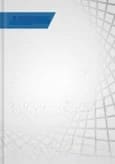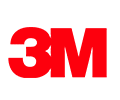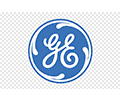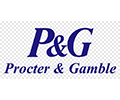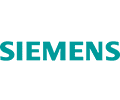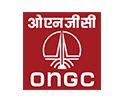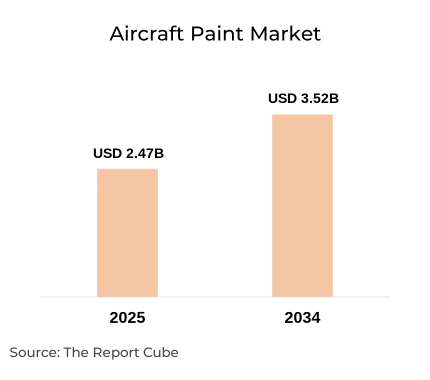
Understand The Key Trends Shaping This Market
Download Free SampleAircraft Paint Market Overview: Market Size & Forecast (2026–2034)
What is the anticipated CAGR & size of the Aircraft Paint Market?
The Aircraft Paint Market is anticipated to register a CAGR of around 4.03% during the forecast period, 2026-34. Additionally, the market size was valued at nearly USD 2.47 billion in 2025 and is projected to reach almost USD 3.52 billion by 2034.
Market Analysis & Insights
The demand for cutting-edge exterior aircraft coatings & interior aircraft paint solutions, as well as expanding commercial aviation & fleet developments, are fueling the progressing of the Aircraft Paint Market. Innovation in aqueous aircraft coatings, low-VOC aircraft paint, and anti-corrosion aircraft coatings is driven by new initiatives & products such as Sherwin-Williams' high-performance polyurethanes & AkzoNobel's Aerofleet coatings management system. Also, paint longevity & the usage of fire retardant coatings are further enhanced globally by government aviation policies that emphasize VOC emissions control, FAA needs, and MRO demand for aircraft repainting services.
Furthermore, aircraft repainting services, and military aircraft coatings demand, with distribution networks ranging OEMs, MRO facilities, and direct contracts also contributes in enhancing market share. Moreover, market companies, including AkzoNobel, PPG, and Sherwin-Williams provide UV resistance, self-healing coatings, and lightweight aircraft paints made for better aerodynamic performance & solvent-based paint substitutes, supporting general aviation paint requirements. Further, recent government policies emphasise on sustainable manufacturing & partnerships, like virtual reality (VR) paint training, also illuminate the Aircraft Paint Market’s innovative direction.
The Aircraft Paint Market is presumed to continue expanding in with the rising demand for military aircraft coatings, high inclination towards smart coatings, digital advancements, AI-driven solutions for quality monitoring & predictive maintenance in the future years.
What is the Impact of AI in the Aircraft Paint Market?
AI acceptance in the Aircraft Paint Market is augmenting inspection, application, and maintenance processes. Furthermore, AkzoNobel’s Aerofleet digital system deploys machine learning for paint maintenance optimization, while drones & robotic AI-powered spray systems enhance paint application procedures, minimizing waste & ensuring consistent aircraft repainting services. Thus, these projects enable predictive MRO demand & improved paint durability.
Aircraft Paint Market Dynamics
What driving factor acts as a positive influencer for the Aircraft Paint Market?
- Booming MRO Demand to Influence Market Growth: With about two-thirds of global revenue, the Aircraft Paint Market is ruled by the upscale in MRO demand for repainting & livery renewal cycles. For longer-lasting, corrosion-resistant finishes that support numerous repainting schedules every five to seven years, airlines & aviation MRO providers utilizes sophisticated high-performance polyurethanes & epoxy coatings. Also, the industry for aircraft repainting services & sustainable, low-VOC aircraft paint is expanding as a result of these trends, which also highlights branding upgrades & operational maintenance necessities.
What are the challenges that affect the Aircraft Paint Market?
- Capacity Limitations & Supply Chain Disruptions: The Aircraft Paint Market faces a varied challenge, such as capacity constraints & supply chain disruptions. Post-pandemic demand upsurge for aircraft repainting has astounded paint shops, causing long delays. Further, raw material shortages, specifically of high-performance polyurethanes & specialty coatings, have elevated costs & hampered timely delivery. Moreover, limited availability of new paint hangars, mainly in the US, constrains capacity expansion, impacting maintenance cycles & overall market development.
How are the future opportunities transforming the market during 2026-34?
- Innovative Opportunity in Self-Healing & Lightweight Coatings: As airlines strive for increased asset life, fuel efficiency, and aerodynamic performance, the fast development of lightweight, self-healing coatings offers substantial opportunities. Also, better operational efficacy is made possible by advancements in paint longevity, UV resistance, and self-healing coatings for external aircraft coating types & component protection. Further, in order to support the shifting fleet modernization & sustainability agenda, leading Aircraft Paint Market companies work together on R&D to create waterborne solutions with enhanced anti-corrosion protection.
What market trends are affecting the Aircraft Paint Market Outlook?
- Advanced & Smart Paint Application Techniques Trend: The acceptance of automated, robotic paint application methods like electrostatic spraying & drone-assisted painting is destined to alter the Aircraft Paint Industry. These developments improve process efficiency, reduce waste, and optimize finish quality, addressing expanding Aerospace Coatings Market demands. Also, real-time monitoring & AI incorporation in application systems, together with digital livery design, support precise & consistent outcomes while minimizing lifecycle costs, key for both general aviation paint & large-scale commercial operators.
How is the Aircraft Paint Market Defined as per Segments?
The Aircraft Paint Market Research Reports provide detailed market data & insights in accordance with market segmentation. Some of the segments are:
- Paint Type / Coating Type: Epoxy, Enamel, Polyurethane, Acrylic, Fluoropolymer, Water-based vs. Solvent-based
- Application: Exterior (aircraft body, fuselage, wings, tail), Interior (cabins, seats, overhead bins, side-walls), Component/Parts (engines, landing gear, nacelles)
By Paint Type / Coating Type:
The Polyurethane paints segment is observed to be one of the most potential paint type in the Aircraft Paint Market, commanding for over 48% market share.
The Polyurethane paints exceptional gloss retention, weather resistance, and little maintenance characteristics are the aspects behind its large adoption worldwide. Owing to their longevity, these high-performance polyurethanes are typically utilized in commercial aircraft, supporting both OEM & MRO paints for exterior & component coating.
By Application:
The Exterior paint governs with the biggest market share of approximately 65%, and is observed to witness tremendous upscale in the forecast years as well.
This is accredited to its vital role in shielding fuselage, wings, and tails from corrosion & UV exposure. Also, advanced anti-corrosion aircraft coatings & UV resistance systems are progressively adopted to meet strict operational & regulatory requirements for long-term asset performance.
Aircraft Paint Industry: Regional Insights
The Aircraft Paint Market is geographically diversified, covering:
- North America
- Europe
- Asia-Pacific
- Latin America
- The Middle East & Africa
The North America Aircraft Paint Market dominates the global market, capturing around 36% market share in 2024, projected to be valued at USD 1 billion by 2032.
Strong MRO demand, cultured aerospace manufacturing, strict FAA requirements, and prevalent usage of high-performance polyurethanes, epoxy coatings, and fire-retardant coatings all contribute to this regional supremacy. Also, the regional country of the US accounts for the potential of about 73% of the regional share, further supporting the regional market expansion.
Aircraft Paint Market: What Recent Innovations Are Affecting the Industry?
- 2025: Akzo Nobel NV introduced eco-friendly & water-based aircraft coatings attaining low VOC emissions & superior paint durability, meeting stringent FAA guidelines & enhancing commercial aircraft paint market share.
- 2025: BASF SE launched biodegradable exterior aircraft coating types, minimizing environmental impact for airlines & supporting lightweight aircraft paint & military aircraft coatings demand.
What are the Key Highlights of the Aircraft Paint Market (2026–34)?
- The Aircraft Paint Market estimated, CAGR: about 4.03% (2026–2034) & market value: approx. USD 3.52 billion (2034).
- By Paint Type / Coating Type: Polyurethane coatings dominated with nearly 48% market share, esteemed for gloss & durability.
- By Application: Exterior coatings governs with approximately 65% of the market share.
- By Aircraft Type: Commercial aircraft grab about 60% share, instigated by MRO demand & developing global fleets.
- By End-Use: MRO services account for over 60% of spend owing to routine aircraft repainting services cycles.
- As per the geography, the North America Aircraft Paint Market dominates with about 36% market share, supported by aerospace coatings market & solid MRO demand.
- AI acceptance & self-healing coatings is shaping the Aircraft Paint Industry trends & aerospace coatings industry.
How does the Future Outlook of the Aircraft Paint Market (2034) Appear?
- Sustained Growth: The Aircraft Paint Market size would be estimated as about USD 3.52 billion by 2034 & is presumed to register a CAGR of nearly 4.03% during 2026-34. This is influenced by MRO demand, lightweight aircraft paint, and stringent FAA guidelines.
- Technological Upgrade: Substantial advancements in paint application approaches, UV resistance, self-healing coatings, and smart high-performance polyurethanes solidifies market competitiveness.
- Future Opportunities: Waterborne aircraft coatings, low-VOC aircraft paint, and fire retardant coatings would expand, while AI-enabled inspection & digital paint monitoring optimize aircraft repainting services, enhancing the market’s efficiency & sustainability.
Through 2034, AI would revolutionize aviation paint application, inspection, and MRO demand forecasting, leading to an increased paint durability, compliance, and long-term growth in the Aircraft Paint Market size.
What Does Our Aircraft Paint Market Research Study Entail?
- The Aircraft Paint Market Research Report highlights the forecast growth rate (CAGR) by anticipating the market size and share.
- The market analysis & market scope sheds light upon the primary industry trends, driving aspects, potential opportunities, growth challenges, and other major factors.
- The Aircraft Paint Market Research Report entails details about the most critical shifts in market share in the prominent regions.
- Considering the statistics & the developments by the primary market competitors, our report also strives to demonstrate the most sought-after strategies of the key players.
Table of Contents
- Introduction
- Objective of the Study
- Product Definition
- Market Segmentation
- Study Variables
- Research Methodology
- Secondary Data Points
- Breakdown of Secondary Sources
- Primary Data Points
- Breakdown of Primary Interviews
- Secondary Data Points
- Executive Summary
- Market Dynamics
- Drivers
- Challenges
- Opportunity Assessment
- Recent Trends and Developments
- Policy and Regulatory Landscape
- Global Aircraft Paint Market Overview (2020–2034)
- Market Size, By Value (USD Billion)
- Market Share, By Paint Type / Coating Type
- Epoxy
- Enamel
- Polyurethane
- Acrylic
- Fluoropolymer
- Water-based vs. Solvent-based
- Market Share, By Application
- Exterior (aircraft body, fuselage, wings, tail)
- Interior (cabins, seats, overhead bins, side-walls)
- Component/Parts (engines, landing gear, nacelles)
- Market Share, By Aircraft Type
- Narrow-body
- Wide-body
- Regional jets
- Military
- Commercial
- Market Share, By End User
- Commercial
- Military
- Market Share, By Region
- North America
- Europe
- Asia-Pacific
- Latin America
- The Middle East & Africa
- Market Share, By Company
- Revenue Shares
- Competition Characteristics
- Segment-wise / Industry-wise Market Overview (Forecast 2026–2034)
- By Paint Type / Coating Type Market Overview (2026–2034)
- By Application Market Overview (2026–2034)
- By Aircraft Type Market Overview (2026–2034)
- By End User Market Overview (2026–2034)
- Forecast Year Tables (2026–2034)
- Competitive Outlook (Company Profiles)
- IHI Ionbond AG
- Company Overview
- Business Segments
- Strategic Alliances/Partnerships
- Recent Developments
- Hentzen Coatings Inc
- Company Overview
- Business Segments
- Strategic Alliances/Partnerships
- Recent Developments
- DuPont
- Company Overview
- Business Segments
- Strategic Alliances/Partnerships
- Recent Developments
- Akzo Nobel NV
- Company Overview
- Business Segments
- Strategic Alliances/Partnerships
- Recent Developments
- PPG Industries Inc
- Company Overview
- Business Segments
- Strategic Alliances/Partnerships
- Recent Developments
- BASF SE
- Company Overview
- Business Segments
- Strategic Alliances/Partnerships
- Recent Developments
- Masco
- Company Overview
- Business Segments
- Strategic Alliances/Partnerships
- Recent Developments
- Mankiewicz Gebr & Co
- Company Overview
- Business Segments
- Strategic Alliances/Partnerships
- Recent Developments
- Kansai Paint Co Ltd
- Company Overview
- Business Segments
- Strategic Alliances/Partnerships
- Recent Developments
- Mapaero Coatings
- Company Overview
- Business Segments
- Strategic Alliances/Partnerships
- Recent Developments
- Others
- IHI Ionbond AG
- Contact Us & Disclaimer
List of Figure
Figure 1: Study Framework
Figure 1.1: Objectives of the Study
Figure 1.2: Product Definition Overview
Figure 1.3: Market Segmentation Structure
Figure 1.4: Study Variables and Measurement Approach
Figure 2: Research Methodology Flowchart
Figure 2.1: Secondary Data Sources Map
Figure 2.1.1: Breakdown of Secondary Data Inputs
Figure 2.2: Primary Research Framework
Figure 2.2.1: Breakdown of Primary Interviews by Stakeholder Type
Figure 3: Executive Summary Snapshot
Figure 4: Market Dynamics Framework
Figure 4.1: Key Market Drivers
Figure 4.2: Market Challenges
Figure 4.3: Opportunity Assessment Matrix
Figure 5: Recent Trends and Innovation Landscape
Figure 6: Policy & Regulatory Landscape Overview
Figure 7: Global Aircraft Paint Market Value (USD Billion), 2020–2034
Figure 7.1: Market Size Growth Trend, 2020–2034
Figure 7.2: Market Share by Paint/Coating Type
Figure 7.2.1: Share of Epoxy Coatings
Figure 7.2.2: Share of Enamel Coatings
Figure 7.2.3: Share of Polyurethane Coatings
Figure 7.2.4: Share of Acrylic Coatings
Figure 7.2.5: Share of Fluoropolymer Coatings
Figure 7.2.6: Water-Based vs. Solvent-Based Coatings Share
Figure 7.3: Market Share by Application
Figure 7.3.1: Exterior Coating Share (Body, Fuselage, Wings, Tail)
Figure 7.3.2: Interior Coating Share (Cabins, Seats, Bins, Sidewalls)
Figure 7.3.3: Parts/Component Coating Share (Engines, Landing Gear, Nacelles)
Figure 7.4: Market Share by Aircraft Type
Figure 7.4.1: Narrow-Body Aircraft Share
Figure 7.4.2: Wide-Body Aircraft Share
Figure 7.4.3: Regional Jets Share
Figure 7.4.4: Military Aircraft Share
Figure 7.4.5: Commercial Aviation Share
Figure 7.5: Market Share by End User
Figure 7.5.1: Commercial End-User Share
Figure 7.5.2: Military End-User Share
Figure 7.6: Market Share by Region
Figure 7.6.1: North America
Figure 7.6.2: Europe
Figure 7.6.3: Asia-Pacific
Figure 7.6.4: Latin America
Figure 7.6.5: Middle East & Africa
Figure 7.7: Market Share by Key Companies
Figure 7.7.1: Revenue Share of Leading Companies
Figure 7.7.2: Competitive Characteristics Map
Figure 8.1: Paint/Coating Type Market Forecast (2026–2034)
Figure 8.2: Application-Based Market Forecast (2026–2034)
Figure 8.3: Aircraft Type-Based Market Forecast (2026–2034)
Figure 8.4: End-User Market Forecast (2026–2034)
Figure 8.5: Forecast Tables & YoY Growth (2026–2034)
Figure 9.x.1: Company Overview Dashboard
Figure 9.x.2: Business Segment Breakdown
Figure 9.x.3: Strategic Alliances & Partnerships Timeline
Figure 9.x.4: Recent Developments Summary
Figure 10: Contact & Disclaimer Structure
List of Table
Table 1: Study Variables and Measurement Parameters
Table 2: Breakdown of Secondary Data Sources
Table 3: Breakdown of Primary Interviews by Stakeholder Type
Table 4: Key Market Drivers and Impact Analysis
Table 5: Market Challenges and Mitigation Strategies
Table 6: Opportunity Assessment Matrix
Table 7: Recent Trends and Innovations Overview
Table 8: Policy & Regulatory Framework Summary
Table 9: Global Aircraft Paint Market Size (USD Billion), 2020–2034
Table 10: Market Share by Paint/Coating Type
Table 11: Water-Based vs. Solvent-Based Coatings Comparison
Table 12: Market Share by Application
Table 13: Market Share by Aircraft Type
Table 14: Market Share by End User
Table 15: Market Share by Region
Table 16: Market Share by Key Companies
Table 17: Forecast of Paint/Coating Type Market (2026–2034)
Table 18: Application-Based Market Forecast (2026–2034)
Table 19: Aircraft Type-Based Market Forecast (2026–2034)
Table 20: End-User Market Forecast (2026–2034)
Table 21: Forecast Tables & YoY Growth (2026–2034)
Table 22: Company Profiles – Overview, Business Segments, Alliances & Recent Developments
Top Key Players & Market Share Outlook
- IHI Ionbond AG
- Hentzen Coatings Inc
- DuPont
- Akzo Nobel NV
- PPG Industries Inc
- BASF SE
- Masco
- Mankiewicz Gebr & Co
- Kansai Paint Co Ltd
- Mapaero Coatings
- Others
Frequently Asked Questions

